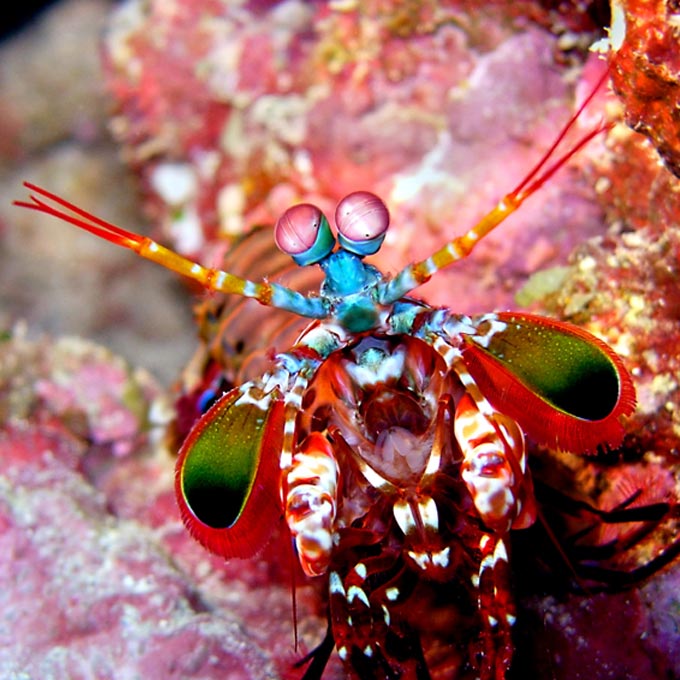Color, Food, and the Story of Shrimp
Typically, I’m neither for nor against shrimp. This morning, though, I felt very deeply about them. On my drive to work, I listened to a podcast. The specific episode of this podcast deals with color—its nature, how we experience it, why it matters, etc. As color is a crucial issue for many of our partners and their products, I was excited to learn more. Then the podcast folks mentioned shrimp, and I felt pretty good about myself, now learning more about color and food.
From a Vibrant World of Colors to Captivating Marketing Storytelling

So they were discussing the differences in color perception among animal species, and apparently, the mantis shrimp is unbelievably, disproportionately gifted when it comes to color perception. “That’s interesting,” I thought, this optically gifted shrimp doing its thing at the bottom of the ocean. “I had no idea,” I thought. “Cool shrimp,” I thought. I admired this shrimp from an intellectual perspective, as a study in nature.
Then one of the podcast panelists spent a few minutes describing how this shrimp, the mantis shrimp (classified as such for its powerful, mantissy claws capable of dismemberment and, in reported cases, aquarium busting), is a killing machine. As in it just shromps around killin’ fish and slaughterin’ shrimp and generally just murdering the ocean for no good reason. “Oh, man, I hate that stinkin’ shrimp,” I thought. “What a terrible, terrible animal. That shrimp doesn’t even deserve to see that many colors.” I said that last part out loud, in my car, by myself. I was now emotionally invested in the mantis shrimp. Wayyyy too emotionally invested. Behold, the power of story.
I had crossed the line of scientific and intellectual rigor, having been ushered from objective analysis into the realm of emotion by the power of story. This shrimp, this thing, now had a story, and suddenly I cared. For better and worse, this is what story does: story makes us care about things.
Crafting Sustainable Stories
Part of our job at MarketPlace is food marketing storytelling: telling the right stories in the food, beverage, and ingredients industries. Our marketing strategists and copywriters are storytellers who understand not only the power of story but also the theory of narrative, the way that story actually functions, so that we’re able to help turn what an industry might classify as a commodity into a prize.
How do we do that? Among other things, we spend time studying a company, its culture, its customers, and its competition to craft a marketing and storytelling strategy that fits, that makes the client’s audience care enough about a company and its products to talk about them, out loud, alone, in the car on the way to work. That’s what the right story can do. That’s what MarketPlace helps B2B and B2C companies in the food, beverage, and ingredients industries do.
